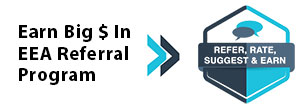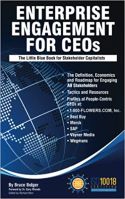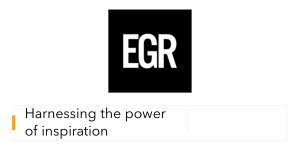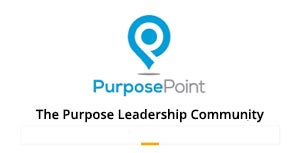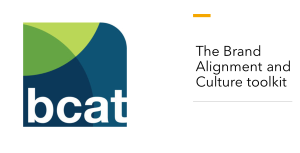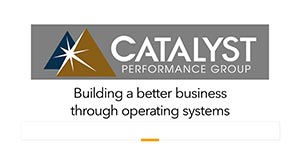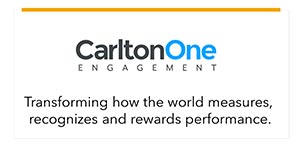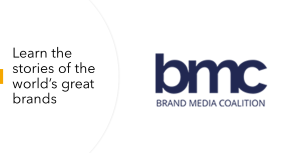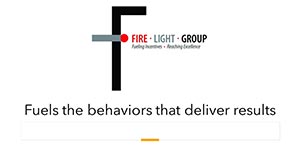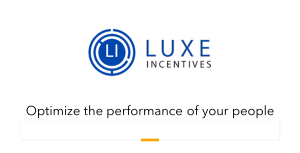EEA Engaged Stock Index Among First to Connect Stakeholder Engagement to Share Price Performance
.png) A mock Exchange-Traded Fund (EFT) known as the Engaged Company Stock Index was launched in October 2012 to prove the financial impact of having highly engaged customers, employees and communities. Here’s a snapshot of efforts by multiple companies to help investors capitalize specifically on the alpha of effective stakeholder management.
A mock Exchange-Traded Fund (EFT) known as the Engaged Company Stock Index was launched in October 2012 to prove the financial impact of having highly engaged customers, employees and communities. Here’s a snapshot of efforts by multiple companies to help investors capitalize specifically on the alpha of effective stakeholder management. Helping to Lead the Way to Actual ETFs
More on the Engaged Company Stock Index
In 2011, the Enterprise Engagement Alliance conceived the idea of creating an Engaged Company Stock Index out of a “Good Company Index? developed by Laurie Bassi, Founder of New York City-based McBassi & Company, a leading and probably one of the first human capital analytics firms. The goal was to test the value created by having highly engaged customers, employees, and supportive communities measured by share price returns. See this article published in 2012 in ESM: Good Company Pioneer Laurie Bassi Sees Progress.
The Enterprise Engagement Alliance Engaged Company Stock Index outperformed the S&P 500 by 38.7% over six years. It was sponsored by EGR International, a New York City-based engagement agency serving some of the world’s best-known brands. Drawing upon about a dozen data points measuring customer satisfaction, employee engagement, and community support, the Good Company Index analyzed 100 publicly held companies for their actions as employers, sellers, and stewards of society and the planet.
The goal of the Engaged Company Index was to create a longitudinal and auditable means of demonstrating the alpha of stakeholder engagement over time, as opposed to back testing previous results. So, the analysts at McBassi created a mock ETF consisting of the 47 best companies in its ratings system, reconfiguring the portfolio based on results of its annual analysis, not on the types of companies or industries.
Drawing upon about a dozen data points measuring customer satisfaction, employee engagement, and community support, the Good Company Index analyzed 100 publicly held companies for their actions as employers, sellers, and stewards of society and the planet.
The goal of the Engaged Company Stock Index was to create a longitudinal and auditable means of demonstrating the alpha of stakeholder engagement over time, as opposed to back testing previous results. So, the analysts at McBassi created a mock ETF consisting of the 47 best companies based on its ratings system, reconfiguring the portfolio based on results of their annual analysis, not on the types of companies or industries.
Today, there are tens of thousands of sustainable funds. What makes the concept of the ECSI study and related actual ETFs is that they focus primarily on the value created by all stakeholders--customers, employees, distribution and supply chain partners, and communities--rather than on organizations founded to address social or environmental issues.
The ECSI study was partly inspired by the work of Alex Edmans, Professor of Finance at London Business School, who in 2011 published in the Harvard Business Review a study of the share price performance of the public companies in the 100 Best Places to Work program. Using backtesting methodology, he found that on average those companes with "high employee satisfaction outperform their peers by 2.3% to 3.8% per year in long-run stock returns – 89% to 184% cumulative – even after controlling for other factors that drive returns." Addressing the causative versus correlative question, he writes, "Moreover, the results suggest that it’s employee satisfaction that causes good performance, rather than good performance allowing a firm to invest in employee satisfaction." See ESM: News Analysis--More Data Links Engagement and Stock Market Performance. This study was recently duplicated with similar results in the UK. See ESM: UK Study Confirms ROI of Employee Experience.
Helping to Lead the Way to Actual ETFs
According to a 2021 article in GreenMoney.com by Robert Zevin, at the time Chief Investment Officer at Zevin Asset Management, an early investment firm focused on sustainable investment, the category began as an outgrowth of the 1960s social movements. The Calvert Sustainability Fund, launched in 1982, was perhaps the first mutual fund created to provide investors with a platform to invest in companies that demonstrated positive environmental, social, and governance (ESG) practices. The fund sought to promote responsible investing by focusing on companies that balanced financial returns with positive societal and environmental impact, with a social angle in that it did not include companies with investments in South Africa during the apartheid era, or in tobacco or other products deemded to be dangerous to the public.
Morningstar was another pioneer with the launch of its Domini 400 in 1991, which is emblematic of other ESG (environmental, social, and governance) funds and remains a leading ESG fund to this day.
Later sustainable funds are mostly based more on companies that focus on enhancing returns for investors only by creating value for customers, employees, supply chain and distribution partners, communities, and the environment, rather than specifically on selecting companies created to address social or environmental issues.
The JUST US Large Cap Equity ETF, also known as the JUST ETF, was launched in June 2018. This fund was created by Goldman Sachs Asset Management in collaboration with JUST Capital to demonstrate the value of addressing the needs and interests of Americans based on a national annual poll of their priorities.
At roughly the same time, the Calvert Sustainability ETF was created as part of its ranking of America's 100 Most Sustainable Companies. This list is managed by Calvert Research and Management and has been featured in Barron's for several years.
The Harbor Human Capital Factor Unconstrained ETF (HAPY) was launched in February 2022 and the Harbor Human Capital Factor US Large Cap ETF (HAPI) was launched in October of the same year. Both are based on an analysis of the Human Capital Factor at public companies, a framework developed by Irrational.Capital based on nearly three dozen metrics focused on employee engagement, capabilities, and sense of appreciation.
More on the Engaged Company Stock Index
The Good Company Index was launched in 2011 and was managed for several years as part of Laurie Bassi's book Good Company. Her firm evaluated Fortune 100 companies based on their behavior as employers, sellers, and stewards of society and the planet.
From Oct. 1, 2012 to June 30, 2018, when the study concluded, the ECSI portfolio outperformed the S&P 500 (including dividends) by 37.1 percentage points.
The Good companies were up by 149.% over the period, versus 112.3% for the S&P 500, a notable alpha in the world of hedge funds which on average do not outperform the S&P 500, according to Investopedia.
The Good Company portfolio included 47 companies with combined high scores as employers, sellers, and stewards of the community and environment. Tracking of the portfolio began on Oct. 1, 2012. The composition of the portfolio was periodically updated (most recently on Jan. 31, 2017), based on new data from the Good Company Index. The experiment concluded after six and one half years, deemed long enough to be instructive, and with actual ETFs based on the same premise looming in the horizon.
The index was comprised of the following companies when the study terminated. Note that almost all of these companies are in business seven years after the experiment was completed.
|
3M AbbVie Amgen Apple Applied Materials Biogen Boston Scientific Bristol-Myers Squibb Capital One Cisco Systems Clorox Cognizant Technology Solutions Colgate-Palmolive ConocoPhillips Costco Wholesale Cummins eBay EMC General Mills Goldman Sachs Hershey Hess Hilton Humana |
Intel Johnson & Johnson Lockheed Martin Marriott MasterCard Microsoft Monsanto Nike Nordstrom PepsiCo Priceline Group Prudential Qualcomm Rockwell Automation Salesforce Sempra Energy Southwest Airlines Starwood Hotels & Resorts Tesoro The Hartford UPS Viacom Whole Foods Market |
Enterprise Engagement Alliance Services
 Celebrating our 15th year, the Enterprise Engagement Alliance helps organizations enhance performance through:
Celebrating our 15th year, the Enterprise Engagement Alliance helps organizations enhance performance through:
1. Information and marketing opportunities on stakeholder management and total rewards:
- ESM Weekly on stakeholder management since 2009. Click here to subscribe; click here for media kit.
- RRN Weekly on total rewards since 1996. Click here to subscribe; click here for media kit.
- EEA YouTube channel on enterprise engagement, human capital, and total rewards since 2020
 Management Academy to enhance future equity value for your organization.
Management Academy to enhance future equity value for your organization.3. Books on implementation: Enterprise Engagement for CEOs and Enterprise Engagement: The Roadmap.
4. Advisory services and research: Strategic guidance, learning and certification on stakeholder management, measurement, metrics, and corporate sustainability reporting.
5. Permission-based targeted business development to identify and build relationships with the people most likely to buy.
Contact: Bruce Bolger at TheICEE.org; 914-591-7600, ext. 230.


